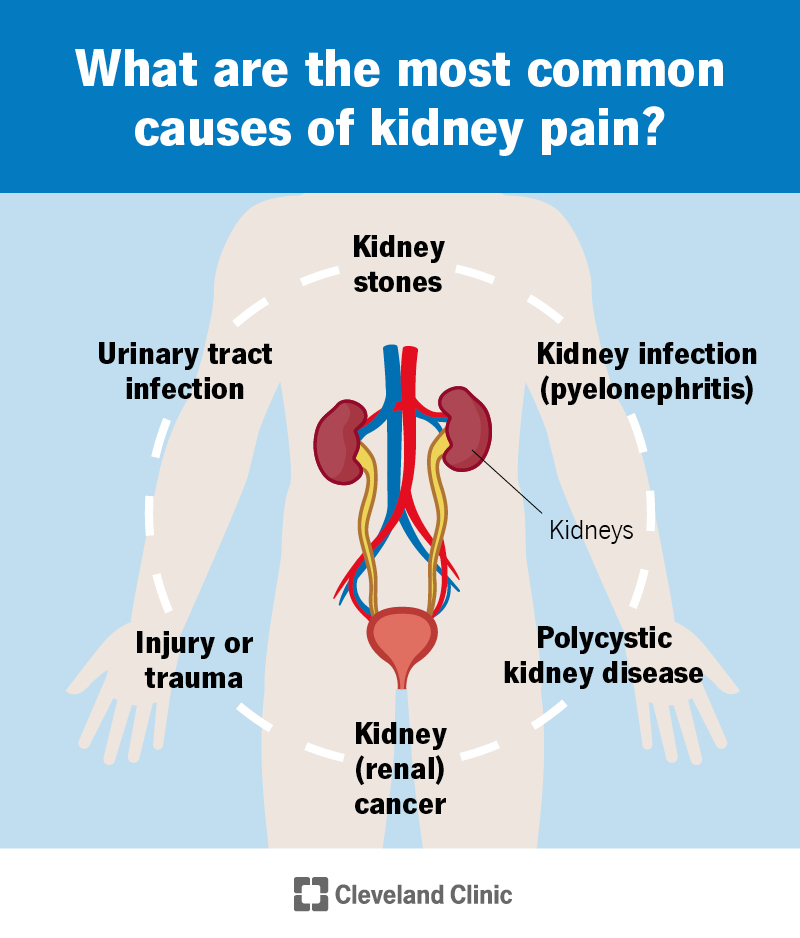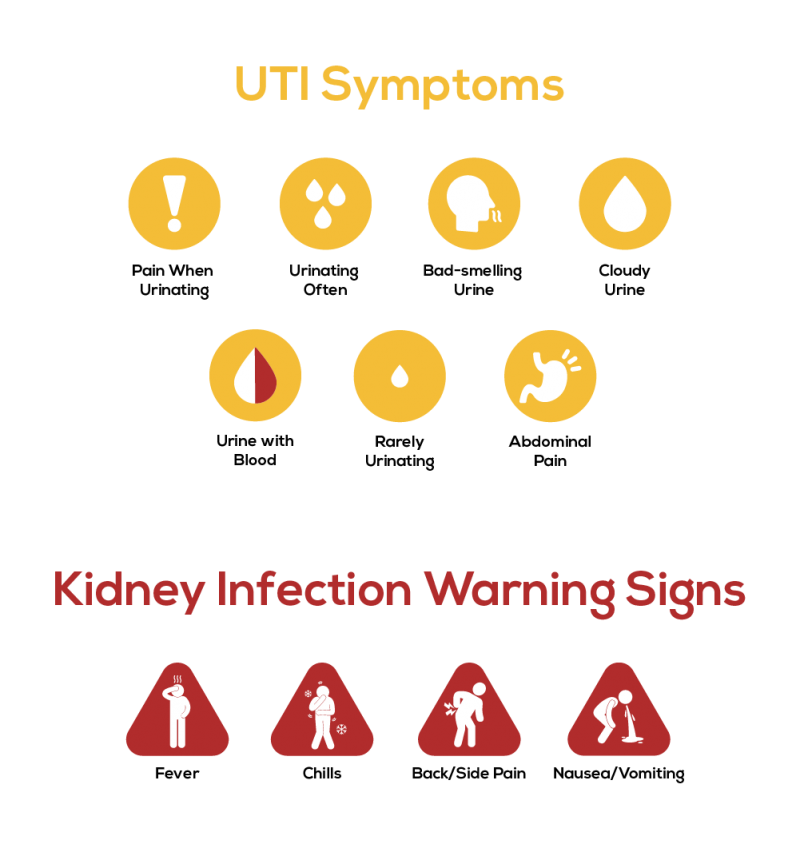Understanding the Secret Differences Between Kidney Stones and Urinary System Infections: A Detailed Overview for Patients
Recognizing the distinctions in between kidney stones and urinary system infections (UTIs) is crucial for clients that may be experiencing similar symptoms yet encounter vastly various health and wellness challenges. While both problems can show up discomfort in the lower abdomen or back, their underlying reasons, diagnostic techniques, and treatment methods deviate substantially. A nuanced understanding of these differences not just aids in precise self-assessment yet also notifies conversations with doctor. As we explore these crucial facets, it becomes clear that recognizing the special attributes of each problem can profoundly affect person outcomes. What could be the very best method to resolving these distinctions?
Review of Kidney Stones
The development of kidney stones, a excruciating and often incapacitating condition, underscores the crucial significance of maintaining kidney health and wellness. Kidney stones, likewise called renal calculi, are strong masses that create from crystals in the pee. These stones can vary in dimension from a grain of sand to a golf sphere and can reside in any component of the urinary system system. The key sorts of kidney stones consist of calcium oxalate, calcium phosphate, uric acid, struvite, and cystine stones, each with distinct reasons and threat aspects.
A number of variables contribute to the formation of kidney stones. Furthermore, metabolic problems and certain medical problems may incline people to stone development.
Signs of kidney stones can include serious flank nausea or vomiting, hematuria, and discomfort, which usually motivate immediate clinical evaluation. Treatment options differ, ranging from enhanced fluid intake and nutritional alterations to clinical treatments such as lithotripsy or medical removal, relying on the dimension and area of the stones. Recognizing these elements is vital for efficient avoidance and administration.
Introduction of Urinary Tract Infections
Urinary tract infections (UTIs) stand for an usual yet considerable health concern, affecting numerous people annually. These infections occur when bacteria get in the urinary system, which consists of the kidneys, ureters, bladder, and urethra. The bulk of UTIs are caused by Escherichia coli, a kind of germs normally discovered in the intestinal tract. While UTIs can affect anyone, they are specifically common in ladies because of physiological distinctions that help with microbial access.
The danger aspects for establishing a UTI include sex, particular kinds of birth control, urinary system retention, and a history of previous infections. People with weakened pre-existing problems or immune systems, such as diabetic issues, might likewise go to higher risk. UTIs can be identified into 2 major kinds: difficult and uncomplicated. Straightforward UTIs are normally restricted to the bladder and are much more typical in healthy and balanced people, while complex UTIs might entail the kidneys and occur in those with underlying health and wellness issues.
Motivate diagnosis and treatment are vital to protect against complications, such as recurring infections or kidney damage (Kidney Stones vs UTI). Usually, UTIs are treated with anti-biotics, and safety nets can be utilized for those with regular events
Usual Signs And Symptoms Contrast
Symptoms of urinary system system infections and kidney stones can usually overlap, leading to confusion in diagnosis. In comparison, kidney stones have a tendency to cause severe, sharp discomfort that radiates from the back to the reduced abdominal area and groin, commonly explained as colicky discomfort.
Furthermore, UTIs might be come with by fever and cools, especially in more severe cases, while kidney stones can lead to nausea or vomiting and vomiting due to intense pain. Both problems can lead to blood in the pee (hematuria), but the visibility of blood is much more commonly connected with kidney stones. While pain during peeing is a hallmark of UTIs, kidney stones typically provide with more sharp pain episodes, reference which may go and come. Understanding these sign differences can assist clients in recognizing their problem, although clinical assessment stays essential for accurate medical diagnosis and therapy.
Medical Diagnosis Approaches
How can healthcare experts precisely separate between kidney stones and urinary tract infections? The diagnostic process begins with a comprehensive case history and an in-depth evaluation of the individual's signs and symptoms. Medical professionals often perform a physical exam, which might disclose inflammation in the abdominal area or flank region, assisting the diagnostic pathway.
Lab tests play an important function in identifying in between these 2 problems. Kidney Stones vs UTI. A urinalysis can determine the presence of blood, crystals, or germs, which are a sign of either condition. In cases of urinary system system infections, the urinalysis might reveal a substantial existence of leukocyte and nitrites, while kidney stones might provide with specific crystals
Imaging researches, such as stomach ultrasound or computed tomography (CT) scans, are crucial for envisioning kidney stones. These imaging techniques make it possible for doctor to assess stone size, area, and potential blockages in the urinary system. In contrast, urinary system tract infections normally do not need imaging unless problems are believed.
Together, these analysis techniques empower medical care professionals to properly distinguish and diagnose in between kidney stones and urinary tract infections, ensuring that individuals receive proper treatment and management.
Treatment Choices and Avoidance
While both kidney stones and urinary system tract infections (UTIs) need punctual treatment, their administration methods differ dramatically.
The treatment for kidney stones usually involves pain monitoring, hydration, and sometimes, medical treatments such as extracorporeal shock wave lithotripsy (ESWL) or ureteroscopy to damage or remove down stones. Individuals are regularly encouraged to enhance fluid consumption to promote stone passage and lower recurrence. Dietary adjustments may also be needed, depending upon the stone type.
In comparison, UTIs are largely treated with prescription antibiotics to remove the microbial infection. The details antibiotic suggested relies on the bacteria identified and local resistance patterns. Additional measures, such as check this site out increased liquid intake and urinary analgesics, may assist reduce symptoms.
Avoidance techniques vary also; for kidney stones, preserving sufficient hydration and sticking to nutritional constraints can be efficient. For UTIs, preventative techniques include proper health methods, peing after intercourse, and perhaps prophylactic antibiotics for persistent infections. Understanding these treatment and avoidance modalities is important for effective administration and to decrease the risk of difficulties associated with both conditions.
Verdict

Recognizing the distinctions between kidney stones and urinary system infections (UTIs) is vital for clients that might be experiencing comparable signs yet face significantly different wellness challenges. The key types of kidney stones include calcium oxalate, calcium phosphate, uric acid, struvite, and cystine stones, each with unique reasons and risk variables.

Comments on “Kidney Stones vs UTI: Professional Insights on Symptoms, Diagnosis, and Management”